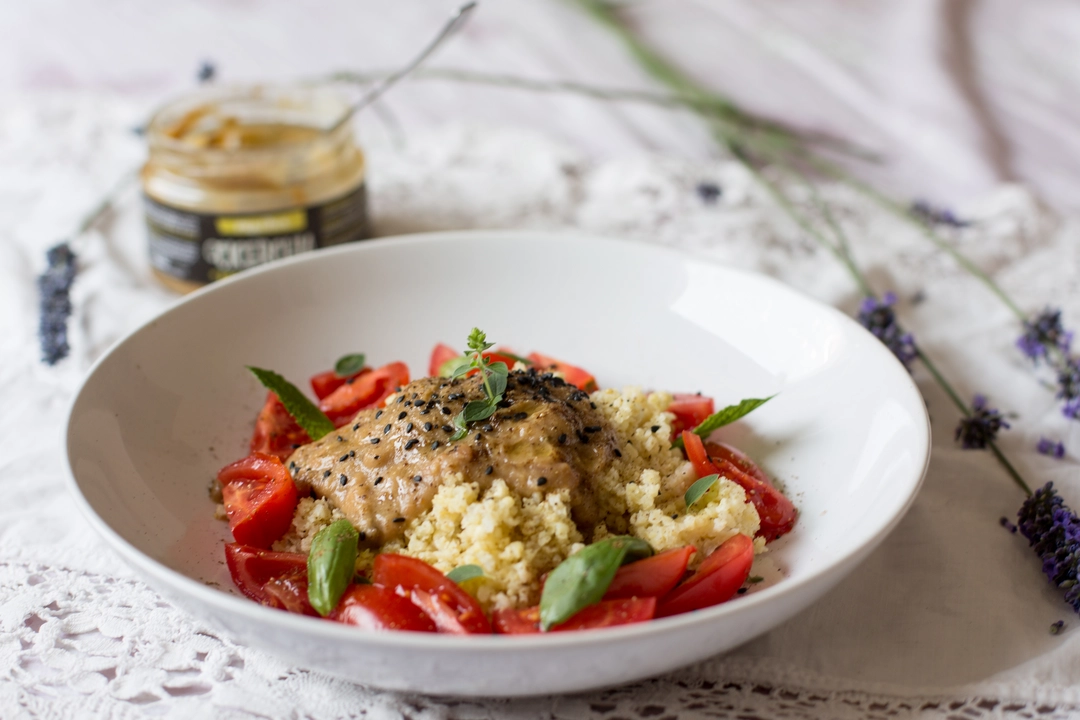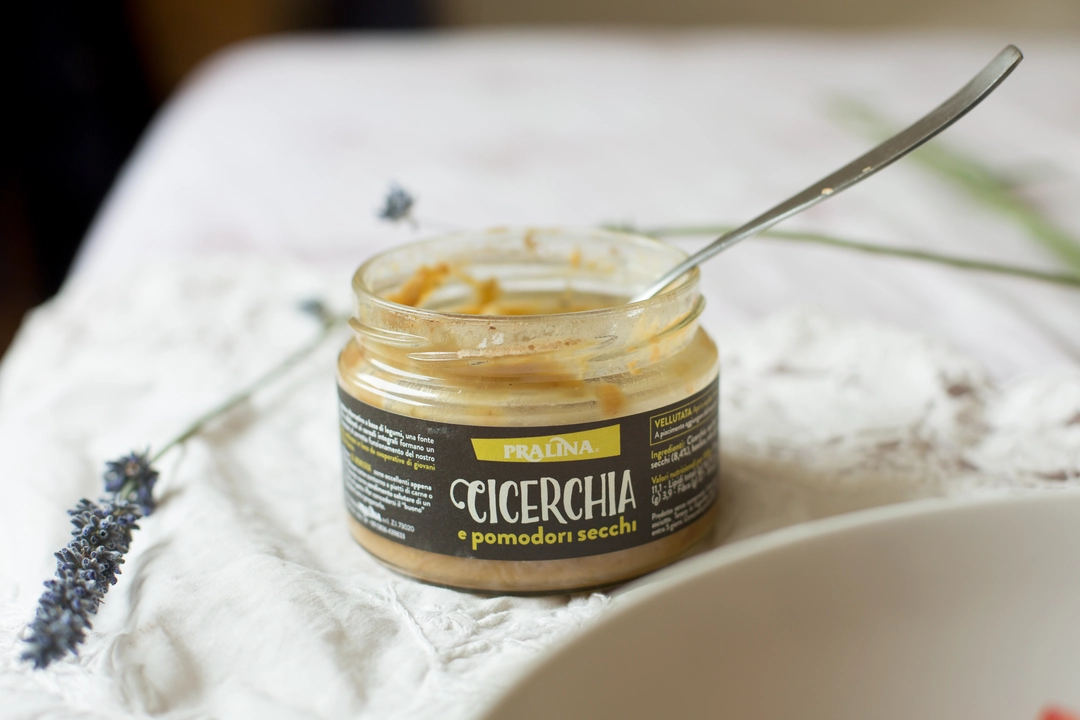SUNDAY IN AUGUST, HOW HOT IT IS ...
But no, we are only on a Tuesday in June. Here then is a healthy and balanced solution to survive the scorching heat that suddenly came: the single dish.
Today I propose cooked millet for absorption, cicerchie and dried tomatoes, cherry tomatoes, good oil, fresh basil and oregano leaves, black sesame seeds and lavender flowers, which with its unmistakable aroma gives me feelings of relaxation, cleanliness, freshness.
I like this dish because it is quick to prepare, gluten-free and delicious when eaten at room temperature.
MEDOTUS
So two notes on millet: I cooked it by absorption, as I do for all cereals and pseudo cereals. Unlike rice like refined Basmati, I used a ratio of 1: 3 (poor). For each part of a mile I used three parts (scarce, or 2 and a half) of water. Before cooking the millet, I roasted it dry for a couple of minutes, because in this way it seems to me that it is easier to separate with a fork at the end of cooking (in other words it does not become a pap!). I lightly salted the water (a pinch of salt, or 3 g) and I flavored the water with 2-3 cardamom seeds, which I removed after cooking.
I'll tell you a secret: as a sauce of cicerchie and dried tomato I used #lebiodiverse by the Italian food brand Pralina Salento, that I suggest you to taste, very good consumed at room temperature, with the addition of only a drop of lemon juice. Because in addition to being excellent soups and soups, #lebiodiverse can be used in summer as a tasty alternative to the more classic chickpea humus.
Then, #lebiodiverse join a wonderful project of food traceability and transparency thanks to the qr code that you find on each package (and to the blockchain technology) you will go into the ingredients story that they use.
To the sauce I added the juice of half a lemon and 3 g of salt because, having to accompany the millet in hummus style, I wanted it to have a strong citrus taste. I then cut the cherry tomatoes, peeled and washed the herbs, the lavender (since it is a lavender harvested in a little polluted area, I limited myself to "sprinkle" it dry) and composed the dish as you can see in the photo.
Good lunch!
I'll tell you a secret: as a sauce of cicerchie and dried tomato I used #lebiodiverse by the Italian food brand Pralina Salento, that I suggest you to taste, very good consumed at room temperature, with the addition of only a drop of lemon juice. Because in addition to being excellent soups and soups, #lebiodiverse can be used in summer as a tasty alternative to the more classic chickpea humus.
Then, #lebiodiverse join a wonderful project of food traceability and transparency thanks to the qr code that you find on each package (and to the blockchain technology) you will go into the ingredients story that they use.
To the sauce I added the juice of half a lemon and 3 g of salt because, having to accompany the millet in hummus style, I wanted it to have a strong citrus taste. I then cut the cherry tomatoes, peeled and washed the herbs, the lavender (since it is a lavender harvested in a little polluted area, I limited myself to "sprinkle" it dry) and composed the dish as you can see in the photo.
Good lunch!
Preparation time
30 minutes

